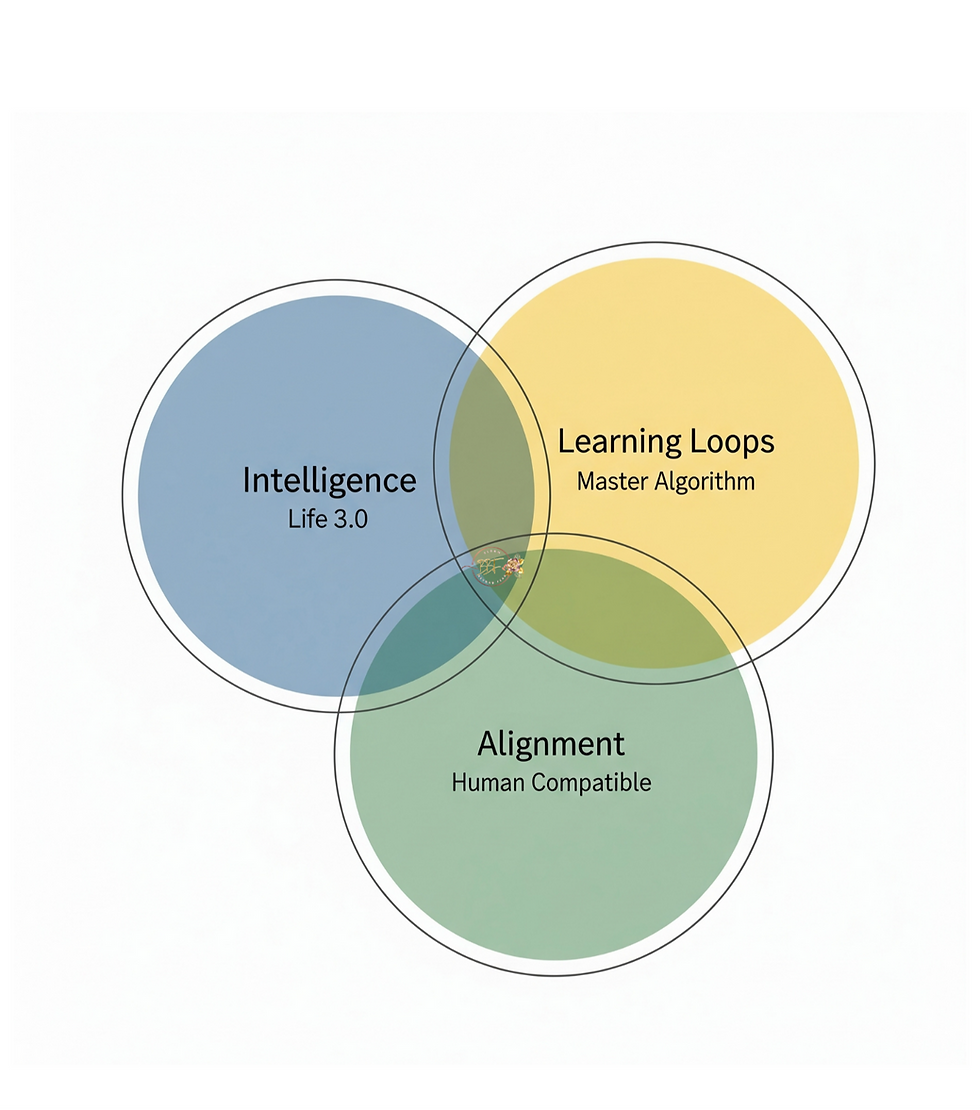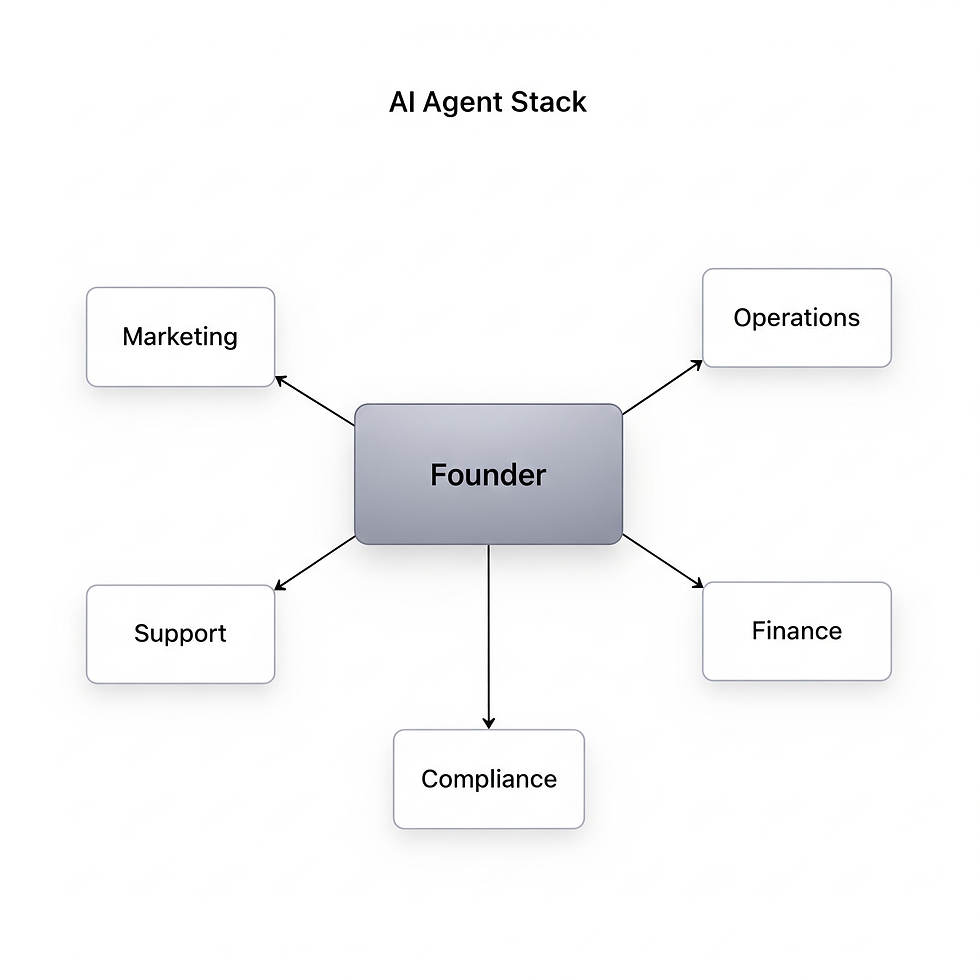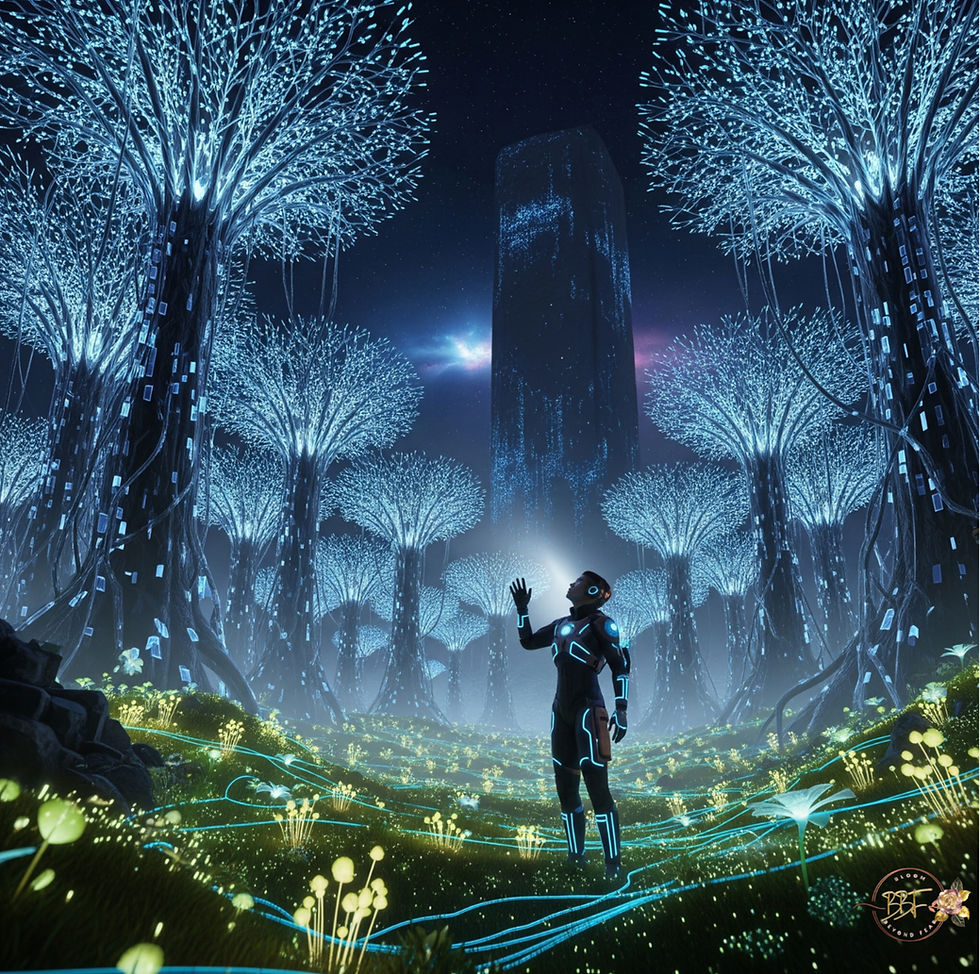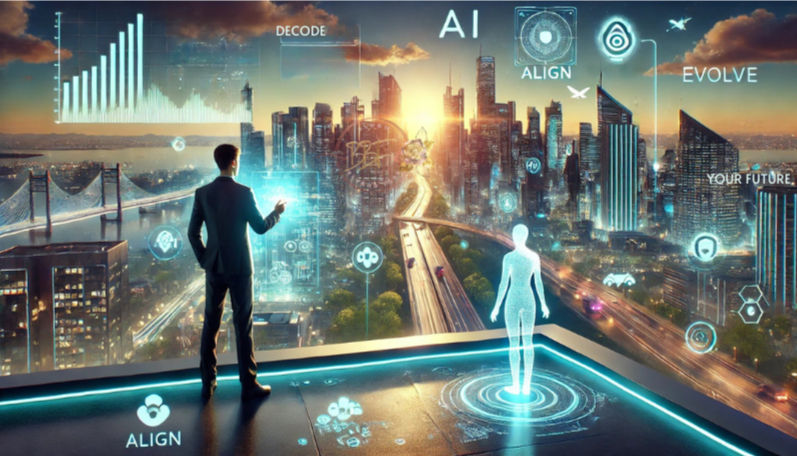AI Billion Dollar Business: How AI, Human Insight, and the Solopreneurship Thesis Could Turn One Visionary Into a Billion Dollar Company
- 80zLady

- Aug 15
- 5 min read
Updated: 7 days ago

Leveraging Life 3.0, The Master Algorithm, Human Compatible, and Sam Altman’s GPT5 Playbook to Launch a Solo Run Empire
Introduction: The Billion Dollar Question
What if the next billion dollar founder doesn’t have a team, an office, or even write a single line of code?
This isn’t a far fetched sci-fi fantasy it’s the trajectory we’re hurtling toward. Today, three landmark AI books (Life 3.0 by Max Tegmark, The Master Algorithm by Pedro Domingos, and Human Compatible by Stuart Russell) offer the intellectual scaffolding to understand how AI will reshape the very definition of work, value creation, and entrepreneurship. Combine these with Sam Altman’s thesis that GPT-5 (and beyond) will allow one person to operate what previously required a team of hundreds, and you get a new category of entrepreneur: The Billion-Dollar Solopreneur.
This blog is part of my ongoing series as I finish each of these books, I’m translating their insights into actionable strategies, both here and in bite-sized LinkedIn posts. Today’s focus: Chapter 2 of all three books, blended with a framework for building a self-improving, human aligned AI business that can be run by one founder, anywhere in the world.
By the end, you’ll have a step-by-step blueprint part philosophy, part execution plan to go from idea to scalable AI-driven empire.
Section 1: The Intellectual Foundation
1.1 Life 3.0 Intelligence Beyond Biology
“One of the most spectacular developments during the 13.8 billion years since our Big Bang is that dumb and lifeless matter has turned intelligent.” – Max Tegmark
In Chapter 2, Tegmark defines intelligence as the ability to accomplish complex goals, independent of its physical substrate. This shatters the idea that human intelligence is the only game in town. Once we understand that intelligence can exist in non-biological forms like AI agents we realize they can be hired, trained, and deployed just like humans… only without the limits of sleep, geography, or payroll constraints.

Solopreneur’s takeaway: In a billion-dollar AI business, you don’t replace human staff you design intelligence into the structure from Day 1. Your “team” becomes a network of specialized agents executing complex goals autonomously.
1.2 The Master Algorithm — Learning How to Learn
“The ultimate goal of machine learning is to automate the process of learning itself.” – Pedro Domingos
Chapter 2 presents a core truth: the real breakthrough isn’t in teaching a system what to do, but in building systems that teach themselves — improving continuously as they process more data. Domingos’ vision of a “Master Algorithm” unifies all major machine learning approaches into a self-refining loop.
Solopreneur’s takeaway: A billion-dollar solo business isn’t powered by static automations. It’s built on AI agents that improve every day — finding better ad copy, optimizing product features, lowering customer acquisition costs all without human micromanagement.
1.3 Human Compatible Aligning with Human Goals
“If we use… a mechanical agency with whose operation we cannot interfere effectively… we had better be quite sure that the purpose put into the machine is the purpose which we really desire.” – Stuart Russell
Russell warns that AI must operate under uncertainty, always seeking to better understand human preferences. This humility in design ensures the system stays aligned with what people actually want, not just what the creator thought they wanted at the start.
Solopreneur’s takeaway: Your AI agents must be programmed to ask, listen, and adapt. Customer needs shift, market trends evolve alignment is a living process, not a one-time setup.
1.4 Sam Altman’s GPT5 Solopreneurship Thesis
Sam Altman has speculated that with the right use of GPT-5 (and successors), a single person could operate a global company by chaining AI agents into specialized workflows each performing a role once reserved for entire departments.
Imagine:
A Product Agent that handles R&D and prototyping
A Marketing Agent that creates and tests campaigns across dozens of platforms
A Support Agent that manages customer service at scale
A Finance Agent that automates accounting, taxes, and forecasting
A Compliance Agent that ensures every region’s legal requirements are met
For the first time in history, one person can manage all of this with AI agents doing the heavy lifting.
Section 2: The Billion Dollar Solopreneur Framework
Step 1 — Identify the “Inevitable” Problem
From Life 3.0: Look for markets where the application of intelligence (human or artificial) dramatically outperforms the status quo.Tools: Use AI to scrape and analyze market trend data, detect underserved niches, and simulate business viability.Example: Detecting inefficiencies in personal finance management for Gen Z freelancers → launching an adaptive AI financial advisor.
Step 2 — Build an AI-Native Core Product
From The Master Algorithm: Your product should be designed to learn and improve from every interaction.Approach: Bake in analytics, A/B testing, and auto-improvement scripts from Day 1.Example: An AI-powered language tutor that adjusts curriculum in real-time based on learner performance.
Step 3 — Create the AI Agent Stack

From Altman’s thesis:
Marketing Agent – Generates creative assets, tests messaging, optimizes ad spend.
Operations Agent – Handles scheduling, logistics, vendor communication.
Support Agent – Answers tickets, manages FAQs, escalates anomalies.
Finance Agent – Monitors cash flow, automates tax filings, suggests reinvestments.
Compliance Agent – Tracks regulatory changes, updates policies.
Step 4 — Human Preference Alignment
From Human Compatible: Install feedback loops so your AI learns from every customer touchpoint.Tactic: Integrate post-interaction surveys, monitor sentiment on social media, and feed this data back into your agents’ training sets.
Step 5 — Scale Without Headcount
AI agents can duplicate successful playbooks across languages, geographies, and industries instantly.Leverage: Licensing your agent stack to other entrepreneurs in non-competing markets.
Section 3: Action Plan - The First 90 Days

Days 1–30: Laying the Foundation
Define your “inevitable problem” and target audience.
Use AI brainstorming tools to generate 50 product ideas; shortlist to 3.
Build MVP with low/no-code AI platforms.
Deploy Marketing, Operations, and Support agents.
Days 31–60: Market Entry
Soft launch to early adopters.
Collect structured feedback (quantitative + qualitative).
Adjust product and marketing messaging.
Days 61–90: Optimization and Scale Prep
Add Finance and Compliance agents.
Automate reporting dashboards.
Begin expansion or licensing talks.
Section 4: Pitfalls and Safeguards
Misalignment Risk: Use Russell’s uncertainty principle program agents to ask before acting in high-impact cases.
Over-Automation Risk: Keep human override options for major strategic moves.
Ethics & Compliance: Build governance into prompts from Day 1.
Conclusion of AI Billion Dollar Business
The next billion-dollar founder won’t be the loudest hustler on Twitter or the one with the biggest venture round — they’ll be the quiet architect who designs, deploys, and orchestrates a symphony of intelligent, self-improving, human-aligned AI agents.

This is not a vision for “some day.” This is a playbook you could start building this week.

%20Symbolizes%20wealth%2C%20wisdom%2C%20and%20God%E2%80%99s%20glory_%20Deep%20Navy%20(%23002F5E)%20Represents%20.png)



Comments